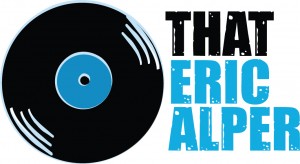Released in November 1970, American Beauty marked a turning point for the Grateful Dead — from acid-drenched psychedelia to heartfelt Americana. And like the best road trips, the stories behind it are full of unexpected detours. Here are 5 of them.
1. It Was Born From Betrayal and Became a Healing Force
American Beauty wasn’t just recorded in a studio — it was summoned through heartbreak, exhaustion, and betrayal. After discovering that their manager Lenny Hart (father of drummer Mickey Hart) had embezzled funds and skipped town, the Grateful Dead were broke, bruised, and looking for solid ground. Instead of leaning into the chaos, they turned inward, crafting gentle harmonies and Americana-infused sounds that felt like balm for a bruised generation. The magnetism of Wally Heider’s studio, surrounded by fellow psychedelic seekers like Santana and Jefferson Airplane, offered sanctuary. For bassist Phil Lesh, who was grieving the death of his father, it was more than music — it was medicine.
2. “Box of Rain” Was a Love Letter to a Dying Father
Phil Lesh had never sung lead on a studio track before “Box of Rain.” But with his father gravely ill, he wanted a song to carry his emotions — and Robert Hunter delivered. Hunter used Lesh’s scat-sung melody as the roadmap and wrote what he later described as one of the fastest lyrics he’d ever composed. “By ‘box of rain,’ I meant the world we live on,” he explained. Lesh practiced the song driving to and from his father’s nursing home. That deep intention gave the song a spiritual weight, making it not just an opening track but an anthem of presence, impermanence, and cosmic compassion.
3. They Weren’t Just Influenced by the Counterculture — They Were the Counterculture
It’s hard to overstate how much American Beauty reflects the late-60s ethos of musical cross-pollination. Jerry Garcia’s experiments with pedal steel on Déjà Vu led to jam sessions with David Crosby, Stephen Stills, and Neil Young, all of whom were regulars in the same Northern California scene. Bill Kreutzmann credited Crosby, Stills, Nash & Young with inspiring the Dead’s newfound focus on harmonies, but Crosby graciously clarified: “They already had their own style — they were just great tale-tellers.” What American Beauty proved was that the psychedelic mind could find peace in a country cadence, and radical truth-telling could wear a flannel shirt instead of a tie-dye.
4. “Friend of the Devil” Was Born in a Baseball Conversation
Mandolinist David Grisman, fresh from the dissolution of Earth Opera, ran into Garcia at a baseball game in Fairfax, California — because, of course, this was 1970 and that kind of magic still happened. Garcia casually invited him to drop by the studio, and just like that, Grisman was laying down mandolin tracks on “Ripple” and “Friend of the Devil.” That offhand invitation led to one of the most iconic acoustic collaborations in Dead history. The track’s folk-roots spirit and elegant picking would go on to influence everyone from bluegrass pickers to jam bands, proving that the Dead’s musical curiosity knew no genre boundaries.
5. “Truckin’” Took Their Worst Night and Turned It Into a National Treasure
The Dead’s arrest in New Orleans during their 1970 tour could’ve been a low point. Instead, they made it immortal. With lines like “Busted, down on Bourbon Street,” “Truckin’” captured the spirit of a band that rolled with life’s punches — hard. Co-written by Jerry Garcia, Bob Weir, Phil Lesh, and Robert Hunter, the song was a snapshot of the road, the drugs, the paranoia, and the poetry of being young and on tour in America. In 1997, the Library of Congress declared the song a national treasure. Because when you sum up an entire era in one line — “What a long, strange trip it’s been” — you earn your place in history.
More than 50 years later, American Beauty still sounds like a warm fire on a cold night. It’s proof that even the trippiest band can find beauty in simplicity. And that sometimes, the most radical thing you can do is write a beautiful song.







